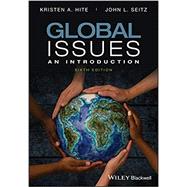An introduction to the most important issues facing an increasingly globalized world with this thoroughly updated and revised sixth edition.
Global Issues is an accessible, wide-ranging introduction to the major environmental and development issues confronting the modern world. Spanning disciplines such as political science, economics, sociology, ecology, international relations, and development studies, this popular textbook enables students to develop a broad perspective on the relationships between nations, society, corporations, and the environment in various contexts. Exploring issues surrounding wealth, poverty, inequality, climate change, natural resources, pollution, technology, and others, the text illustrates the importance of global solutions to the issues facing increasingly interdependent nations around the world.
This sixth edition has been extensively revised to ensure contemporary relevance, featuring updated case studies and compelling research on food security, poverty, and the impact of climate change on development. New discussions explore energy, the UN Sustainable Development Goals, differences in the social and economic conditions of rich and poor countries, and environmental trends. Providing an integrated, multidisciplinary perspective, this unique text:
- Examines the intersection of development, inequality, environment, and society
- Covers topically relevant issues such as population growth, shifting demographics, renewable energy, and the threats that development poses to the environment
- Discusses possible future scenarios and governance concerns related to global issues
- Explores shifts in traditional development pathways and policies around the world
- Offers numerous student-friendly features, including chapter summaries, a glossary of key terms, further reading suggestions, and extensive online media and learning tools
Global Issues: An Introduction, Sixth Edition is an ideal entry-level textbook for a range of courses including global studies, international studies, environmental studies, geography, politics, sociology, sustainable development, and more.









